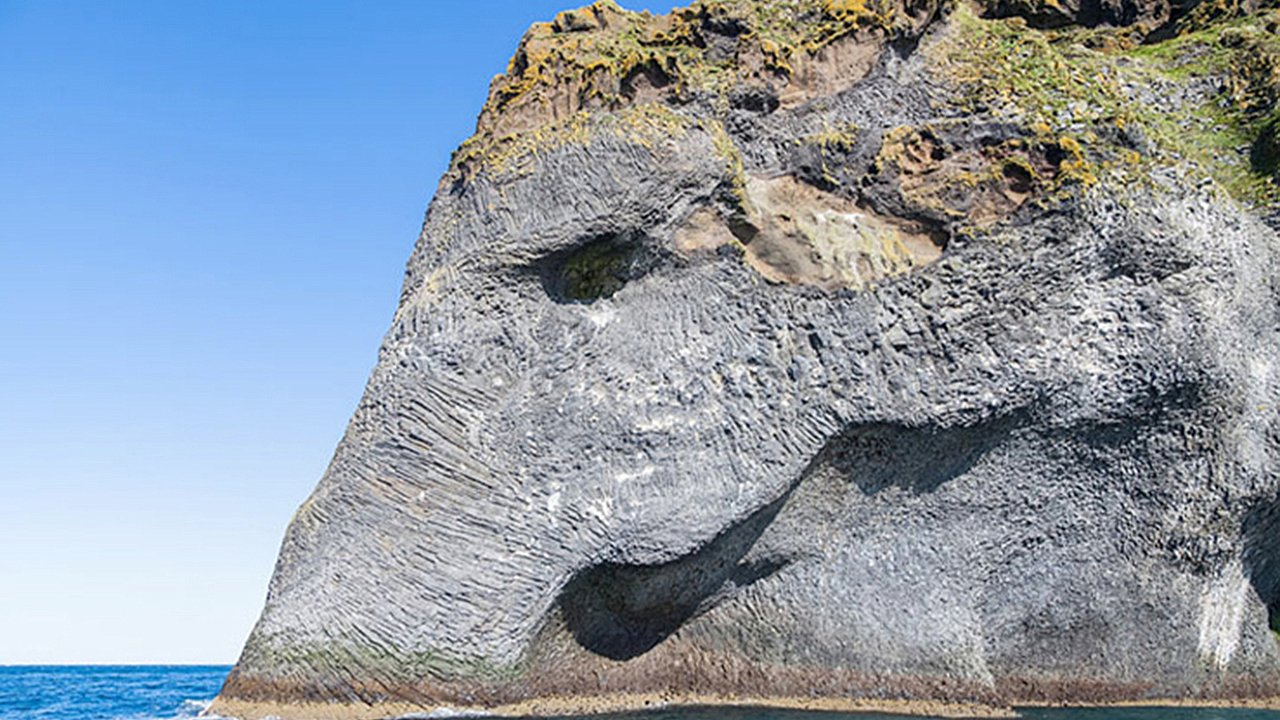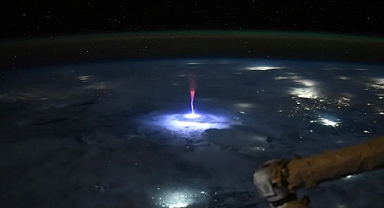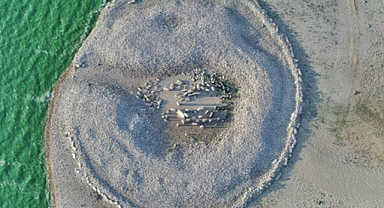Iceland’s Heimaey Island Hides a Breathtaking Elephant-Shaped Rock Formation
On the island of Heimaey, part of the Westman Islands (Vestmannaeyjar) archipelago, lies a stunning basalt rock formation that bears an uncanny resemblance to a giant elephant dipping its trunk into the Atlantic Ocean. Known affectionately as Elephant Rock, this remarkable geological feature looks almost too perfect to be real. The wrinkled texture of the basalt resembles the skin of an elephant, and the overall shape—complete with a clearly defined trunk—makes it look like a massive stone elephant frozen in time.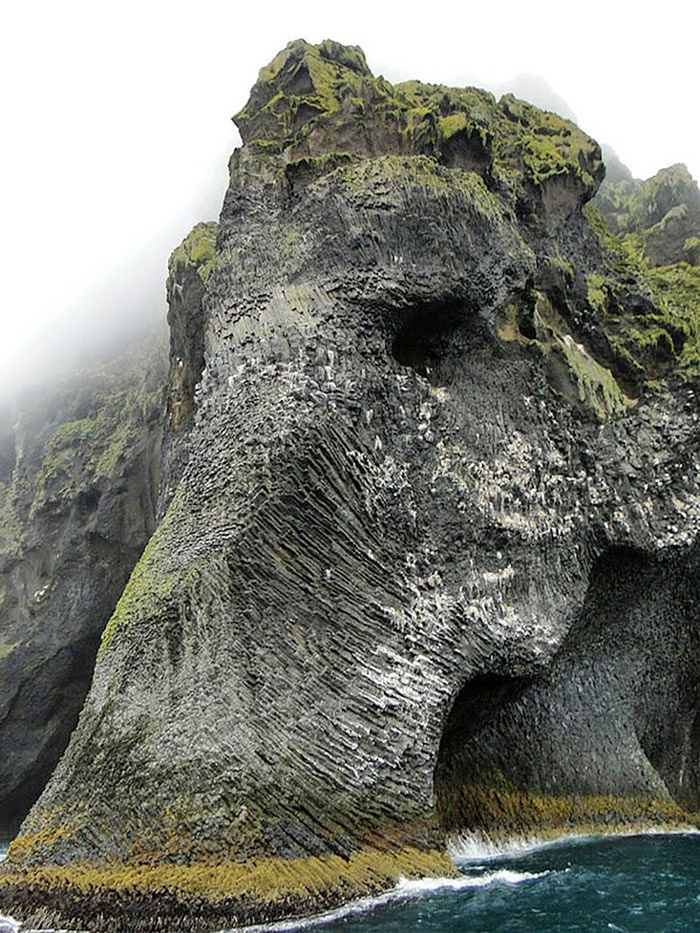 Image credits: shaefierceThe formation is the result of ancient volcanic activity. Heimaey itself was formed by eruptions, and this elephant-shaped rock was likely sculpted by lava flows combined with centuries of wind and wave erosion. The unique texture comes from basalt, a type of volcanic rock that often cools into striking shapes and patterns.What makes Elephant Rock even more captivating is its natural positioning, as it juts out dramatically into the sea. From certain angles, especially when viewed from a boat or drone, the rock's features line up so perfectly that many mistake it for a carved sculpture. However, this stunning formation is entirely the work of natural geological forces—no human intervention involved.
Image credits: shaefierceThe formation is the result of ancient volcanic activity. Heimaey itself was formed by eruptions, and this elephant-shaped rock was likely sculpted by lava flows combined with centuries of wind and wave erosion. The unique texture comes from basalt, a type of volcanic rock that often cools into striking shapes and patterns.What makes Elephant Rock even more captivating is its natural positioning, as it juts out dramatically into the sea. From certain angles, especially when viewed from a boat or drone, the rock's features line up so perfectly that many mistake it for a carved sculpture. However, this stunning formation is entirely the work of natural geological forces—no human intervention involved.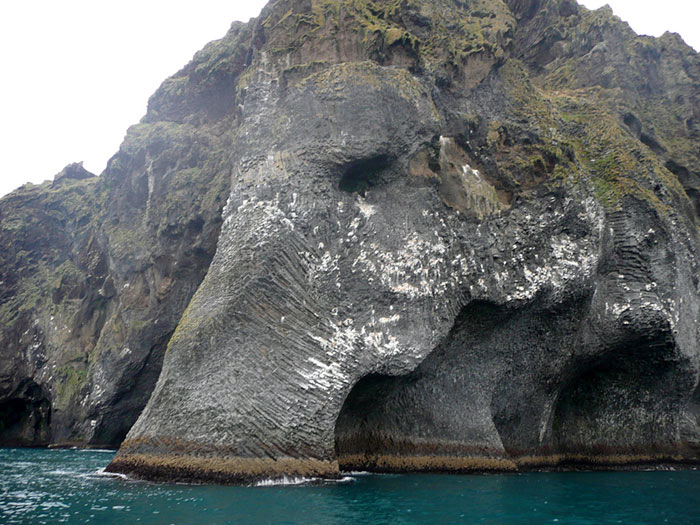 Image credits: Julian MartinHeimaey, the largest of the Westman Islands, is known not only for its volcanic history but also for its thriving bird colonies, dramatic cliffs, and lush landscapes. The Elephant Rock formation has become a must-see landmark for those visiting the island, combining the raw power of Icelandic geology with the whimsical artistry of nature.Whether you're a nature lover, geology enthusiast, or just someone in awe of the Earth’s wonders, Elephant Rock is a surreal and unforgettable sight—an elephant-shaped marvel in the middle of the North Atlantic.
Image credits: Julian MartinHeimaey, the largest of the Westman Islands, is known not only for its volcanic history but also for its thriving bird colonies, dramatic cliffs, and lush landscapes. The Elephant Rock formation has become a must-see landmark for those visiting the island, combining the raw power of Icelandic geology with the whimsical artistry of nature.Whether you're a nature lover, geology enthusiast, or just someone in awe of the Earth’s wonders, Elephant Rock is a surreal and unforgettable sight—an elephant-shaped marvel in the middle of the North Atlantic.
On the island of Heimaey, part of the Westman Islands (Vestmannaeyjar) archipelago, lies a stunning basalt rock formation that bears an uncanny resemblance to a giant elephant dipping its trunk into the Atlantic Ocean. Known affectionately as Elephant Rock, this remarkable geological feature looks almost too perfect to be real. The wrinkled texture of the basalt resembles the skin of an elephant, and the overall shape—complete with a clearly defined trunk—makes it look like a massive stone elephant frozen in time.
 Image credits: shaefierceThe formation is the result of ancient volcanic activity. Heimaey itself was formed by eruptions, and this elephant-shaped rock was likely sculpted by lava flows combined with centuries of wind and wave erosion. The unique texture comes from basalt, a type of volcanic rock that often cools into striking shapes and patterns.What makes Elephant Rock even more captivating is its natural positioning, as it juts out dramatically into the sea. From certain angles, especially when viewed from a boat or drone, the rock's features line up so perfectly that many mistake it for a carved sculpture. However, this stunning formation is entirely the work of natural geological forces—no human intervention involved.
Image credits: shaefierceThe formation is the result of ancient volcanic activity. Heimaey itself was formed by eruptions, and this elephant-shaped rock was likely sculpted by lava flows combined with centuries of wind and wave erosion. The unique texture comes from basalt, a type of volcanic rock that often cools into striking shapes and patterns.What makes Elephant Rock even more captivating is its natural positioning, as it juts out dramatically into the sea. From certain angles, especially when viewed from a boat or drone, the rock's features line up so perfectly that many mistake it for a carved sculpture. However, this stunning formation is entirely the work of natural geological forces—no human intervention involved. Image credits: Julian MartinHeimaey, the largest of the Westman Islands, is known not only for its volcanic history but also for its thriving bird colonies, dramatic cliffs, and lush landscapes. The Elephant Rock formation has become a must-see landmark for those visiting the island, combining the raw power of Icelandic geology with the whimsical artistry of nature.Whether you're a nature lover, geology enthusiast, or just someone in awe of the Earth’s wonders, Elephant Rock is a surreal and unforgettable sight—an elephant-shaped marvel in the middle of the North Atlantic.
Image credits: Julian MartinHeimaey, the largest of the Westman Islands, is known not only for its volcanic history but also for its thriving bird colonies, dramatic cliffs, and lush landscapes. The Elephant Rock formation has become a must-see landmark for those visiting the island, combining the raw power of Icelandic geology with the whimsical artistry of nature.Whether you're a nature lover, geology enthusiast, or just someone in awe of the Earth’s wonders, Elephant Rock is a surreal and unforgettable sight—an elephant-shaped marvel in the middle of the North Atlantic.